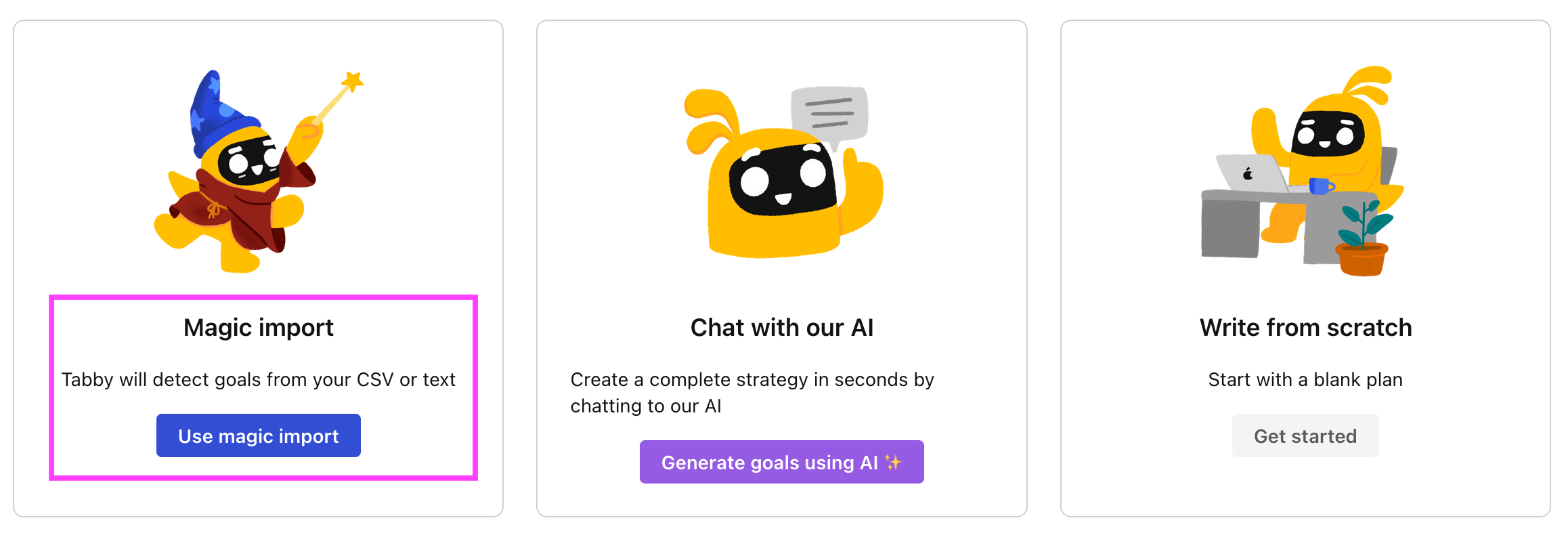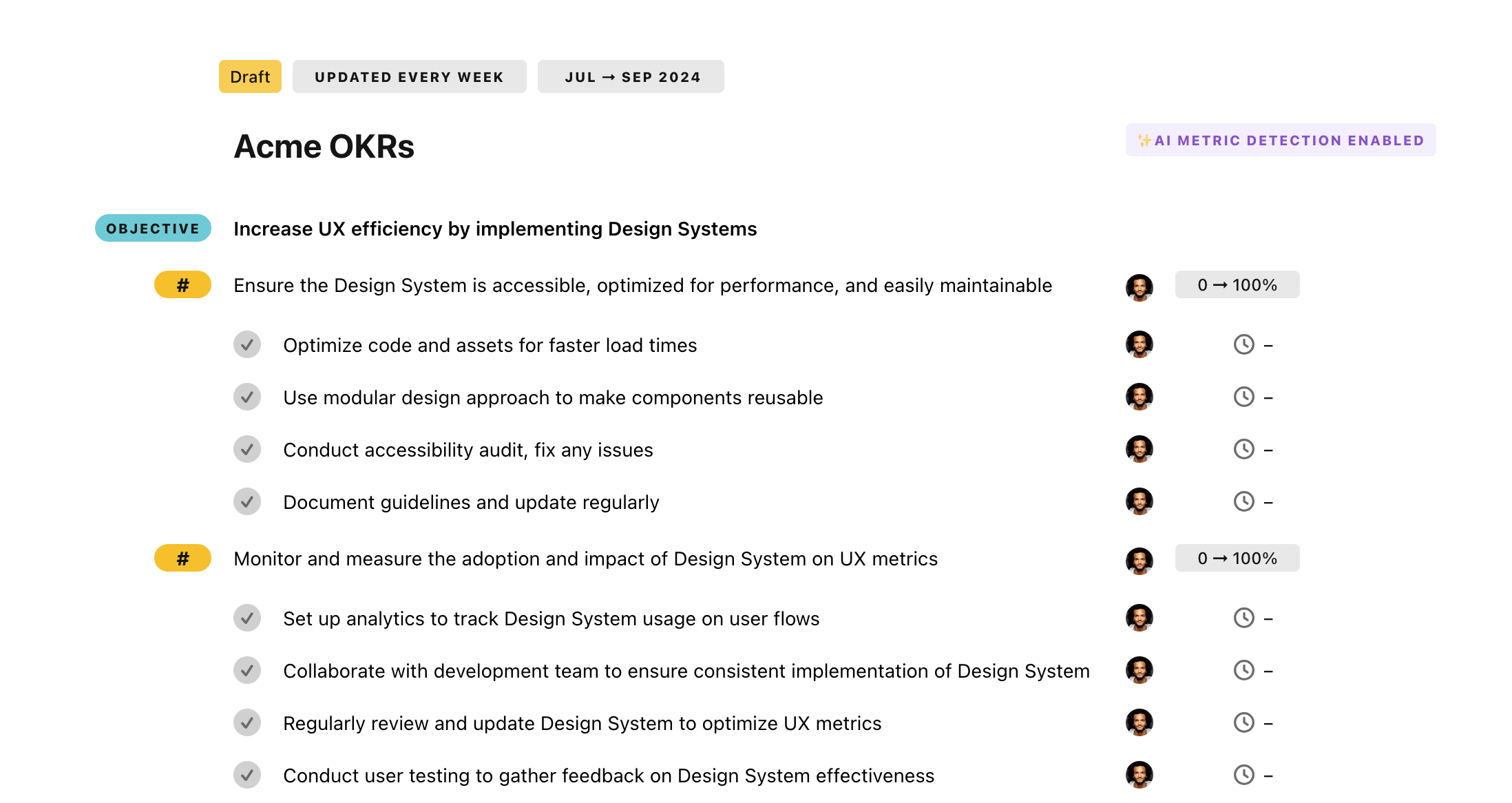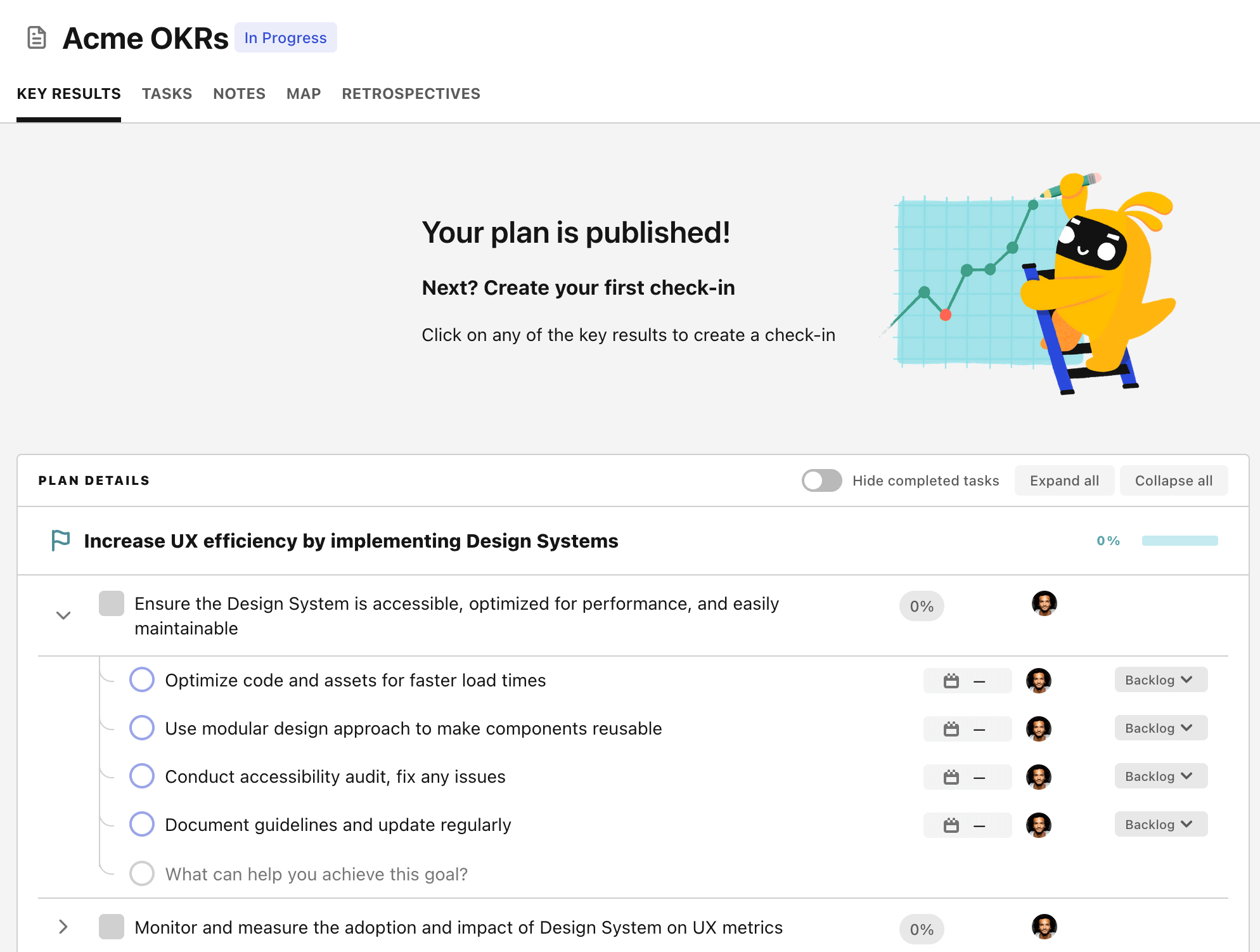OKR template to surpass the established sales target
Your OKR template
The first outcome aims to boost the client conversion rate by 15%. Strategies involved include developing targeted marketing and ad campaigns, enhancing follow-up communication and improving the website user interface and navigation. This enhancement aims to make the customer journey seamless, leading to an overall increase in sales.
The second outcome is to secure five new high-value contracts. This involves initiating negotiations, identifying potential high-value clients, and developing personalized pitches to highlight company strengths. These initiatives aim to attract large ticket clients, thereby increasing sales considerably.
The final outcome revolves around increasing the average sale value by 10%. To achieve this, initiatives like implementing upselling techniques, enhancing product presentation to emphasize quality, and launching a loyalty program are proposed. These strategies are designed to encourage customers to invest more, ultimately increasing the sale value.
ObjectiveSurpass the established sales target
KRBoost client conversion rate by 15%
Develop targeted marketing and ad campaigns
Enhance follow-up communication strategies
Improve website user interface and navigation
KRSecure 5 new high-value contracts
Reach out and initiate negotiations
Identify potential high-value clients and contacts
Develop personalized pitches highlighting our strengths
KRIncrease average sale value by 10%
Implement upselling techniques with complementary products or services
Enhance product presentation to emphasize quality and justify price
Launch a loyalty program offering discounts on higher-priced items
How to edit and track OKRs with Tability
You'll probably want to edit the examples in this post, and Tability is the perfect tool for it.
Tability is an AI-powered platform that helps teams set better goals, monitor execution, and get help to achieve their objectives faster.
With Tability you can:
- Use AI to draft a complete set of OKRs in seconds
- Connect your OKRs and team goals to your project
- Automate reporting with integrations and built-in dashboard
Instead of having to copy the content of the OKR examples in a doc or spreadsheet, you can use Tability’s magic importer to start using any of the examples in this page.
The import process can be done in seconds, allowing you to edit OKRs directly in a platform that knows how to manage and track goals.
Step 1. Sign up for a free Tability account
Go tohttps://tability.app/signup and create your account (it's free!)
Step 2. Create a plan
Follow the steps after your onboarding to create your first plan, you should get to a page that looks like the picture below.

Step 3. Use the magic importer
Click on Use magic import to open up the Magic Import modal.
Now, go back to the OKR examples, and click on Copy on the example that you’d like to use.

Paste the content in the text import section. Don’t worry about the formatting, Tability’s AI will be able to parse it!

Now, just click on Import from text and let the magic happen.

Once your example is in the plan editor, you will be able to:
- Edit the objectives, key results, and tasks
- Click on the target 0 → 100% to set better target
- Use the tips and the AI to refine your goals
Step 4. Publish your plan
Once you’re done editing, you can publish your plan to switch to the goal-tracking mode.

From there you will have access to all the features that will help you and your team save hours with OKR reporting.
- 10+ built-in dashboards to visualise progress on your goals
- Weekly reminders, data connectors, and smart notifications
- 9 views to map OKRs to strategic projects
- Strategy map to align teams at scale